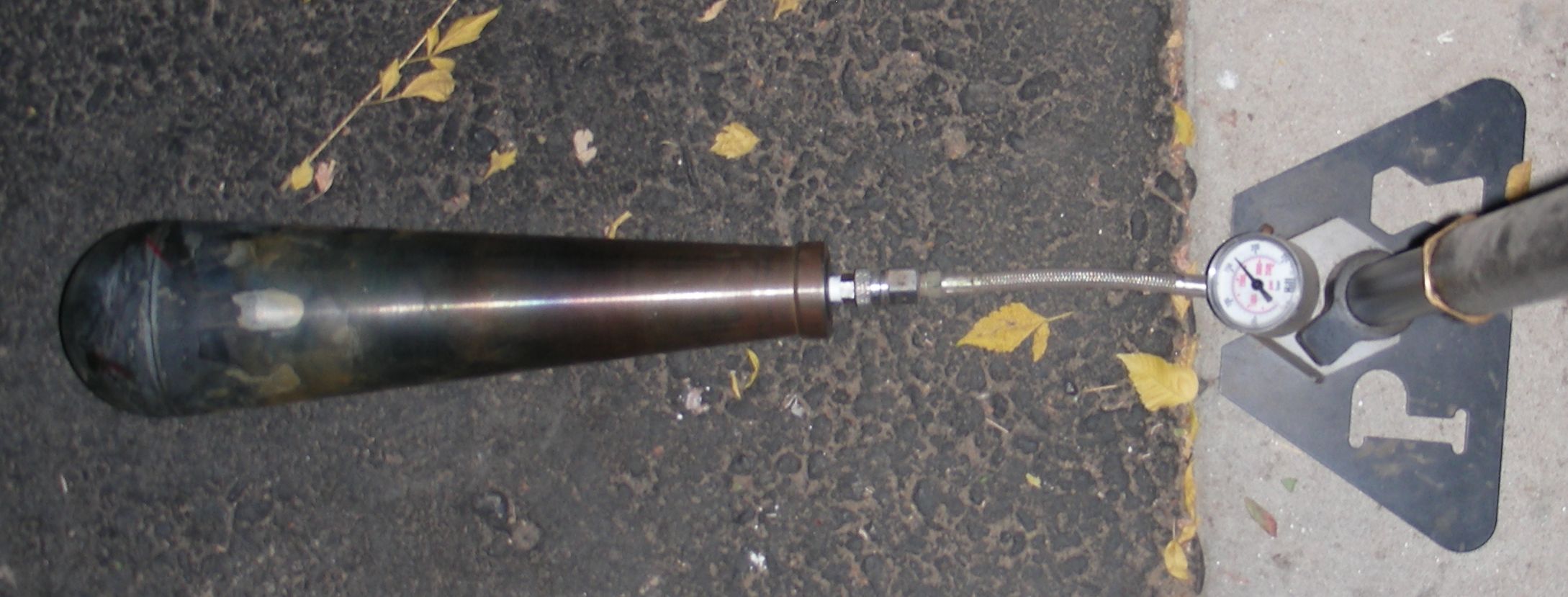The original pressurized buttflasks of the Girardoni rifles were made of rolled and hammered iron sheet. This was riveted and brazed together with a hemispherical end. Herr Girardoni had a high failure rate during testing possibly due to inferior materials. The narrow end was internally threaded to accept the valve. This method has been duplicated by Ernie Cowan on his replicas, and are well made. We are making guns to be used often and want the safety of modern materials and methods.
I had the flasks machined from 3.5″ 10L14 steel bar. My lathe and skills are not up to creating that much swarf . The design and material will allow allow a 3,300 psi working pressure with yield at twice that. One flask has a flat end so that I can have a pressure gauge inset in a detachable hemispherical end. This will also make it easier for testing, data collection and experimentation. Hanks has a completely round steel end.
The flasks were assembled with black flux and 56% silver braze. Insulated firebricks are set atop a cinder block to allow the flask to stand upright into a kiln.
The heating element is placed around the flask…
The kiln lid is placed on top. A thermocouple has been inserted into the flask to keep tabs on the temperature.
The kiln is brought up to temperature. The joint is inspected and the unit shutdown.
Braze melting temperature is 1205 degrees Fahrenheit.
The flasks are descaled and pressure tested. The flask is filled with water, an adapter placed and pressurized to 2,500 psi. I usually leave flasks pressurized for 6 hours, checking for leaks and distortion. The flasks will probably be operated at less than 1,000 psi, so we have a large safety margin.
Later we will thoroughly clean and line the flasks with a grease/beeswax mixture. A leather cover will finish the exterior.
Next time I’ll show the valve design.







